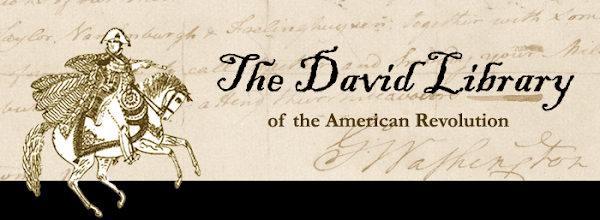Intern's Corner: Battle of Monmouth
Account of Lieutenant Heinrich Carl Philipp von Feilitzsch, Ansbach Jaeger
By Mark Relation, DLAR Intern
The fighting at Monmouth was in some respects an accident,
as the battle did not progress according to either side’s initial
expectations. Washington had expected
Lee to carry out an attack with an advance detachment that would later be
reinforced by Washington’s own troops to push through the British line and
hopefully destroy it. Instead upon
arriving at the battlefield, he found his army in full retreat, despite Lee’s
numerical advantage over the British rear guard. The British were invigorated by initial success
versus Lee’s troops, and had every expectation of continued successes throughout
the battle. However, they were repulsed
repeatedly in a series of major assaults on the American line once Washington
arrived and redeployed his troops They
were eventually pushed back, and lost much of the ground that they had won. As often occurs in war, this battle was
considerably more drawn out and intense than was expected, with much heavy
fighting and marching for the duration of the unseasonably hot day. The following account comes from the diary of
Lieutenant Heinrich Carl Philipp von Feilitzsch, an Ansbach Jaeger in General
Knyphausen’s unit, who details movements of the troops and the intensity of the
engagement.
Fremont-Barnes,
Gregory, Richard Alan Ryerson, James R. Arnold, and Roberta Wiener. The
Encyclopedia of the American Revolutionary War: A Political, Social, and
Military History. Vol. 3. Santa Barbara, CA: ABC-CLIO, 2006. Print. p. 806-810.
June 28th,
1778.
“At two o’clock
in the morning we marched. We were the
rear guard for General Knyphausen’s column.
As this was the first and had nothing to fear, we were thus spared from
fatigue. The second, under the command
of General Cornwallis, followed us with the Light infantry as its rear guard,
and the Queen’s Rangers covering the flank.
They were attacked at once and the majority wounded. Between nine and ten o’clock the enemy came in large
numbers. Cornwallis had already passed
Freehold. The Light Infantry formed a
front, but as they were too weak for this, they were reinforced immediately by
the entire column. This consisted of the
1st and 2nd Brigades, English and Hessian Grenadiers, the
Guards, the Rangers, and the 16th Dragoon Regiment. We do not think the enemy was strong, but
finally discovered that this was Washington
with his army. The cannonade was heavy
by both sides and continued until o’clock.
However, our Britons again proved their bravery, suffering a loss of 400
to 500 men killed and wounded. The enemy
was defeated and pursued as far as a swamp, unknown to us, where we took the
greatest losses, which may have been the enemy’s plan. However, it failed. Reportedly the rebel losses were more than
800 men. They retreated and our army
followed slowly during the night. The
heat was terrible and our greatest losses were the deaths due to the heat.”
Burgoyne, Bruce E. Diaries of Two Ansbach Jaegers. Bowie MD, Heritage Books, INC, 1997. p. 41-42.
 |
|
Field Yager Corps of
Hesse-Cassel, 1776-1783: Privates and Officer in Parade Dress.
|
Lieutenant von Feilitzsch would have worn a uniform very
similar to this one, except with bright red facings and linings on their coats.
Lefferts, Lt. Charles M.
Uniforms of the American, British,
French, and German Armies in the War of the American Revolution,
1775-1783. New York, 1826. Print. p. 252-253.








